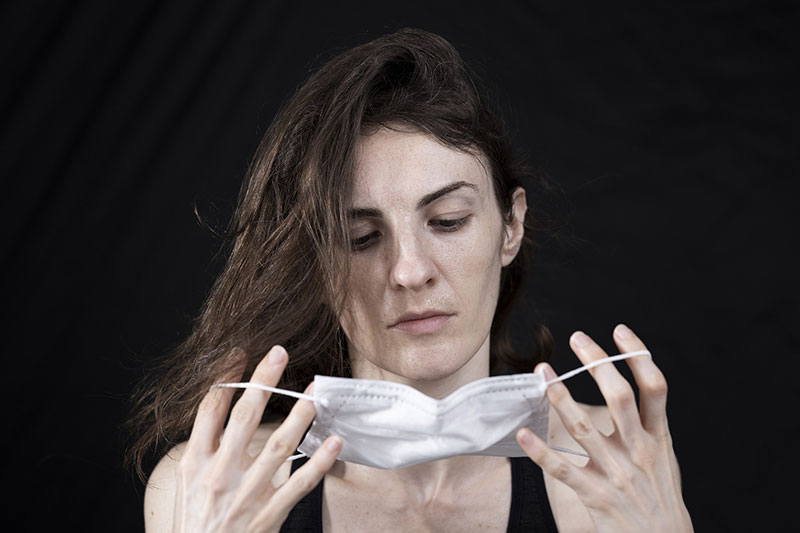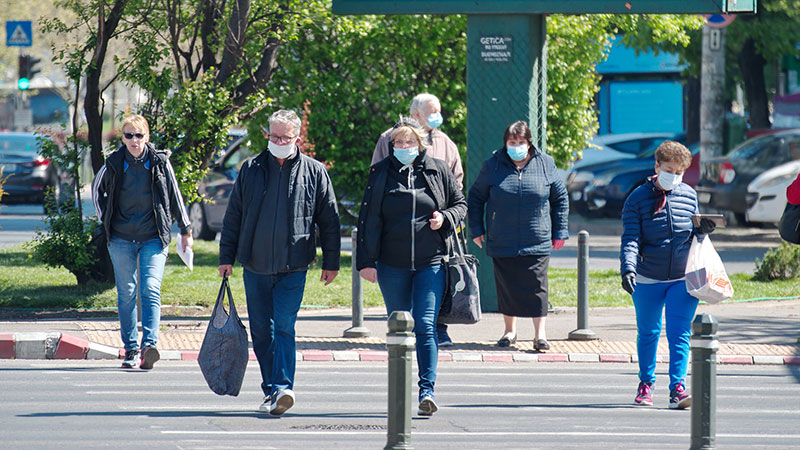TO WEAR OR NOT TO WEAR THE MASK: THAT IS THE QUESTION

The Mask Debate
At the outset of the pandemic in Australia, a number of public health measures were introduced to reduce the spread of COVID-19 infection throughout the community and reference was made to ‘flattening the curve’. Such measures were instrumental in reducing the incidence of the disease and Australia enjoyed a period where the number of cases was relatively few. Now, however, we are experiencing a surge in the number of new infections, particularly in Victoria.
In an attempt to control the spread of disease, it has been considered necessary, on advice from medical experts, to add the use of masks to the list of measures necessary to help limit the spread of COVID-19 where community spread of the infection is taking hold. The wearing of masks is prudent, especially when individuals are at an increased risk.
In Victoria, where the rates of infection and deaths are considered high, the wearing of masks state-wide (as of 03/08/20) is now mandated by the State Government when leaving home. However, in Sydney, New South Wales, where COVID-19 infection is re-emerging, albeit, at a rate well below that seen in Victoria, the State Government has only advocated their use. In Australia, as with elsewhere in the world, there has been both acceptance of, and resistance to, the wearing of masks. The majority of individuals in these jurisdictions appear to recognise (or accept the mandate where legislation has been implemented) that the wearing of masks is important in helping reduce the spread of COVID-19 but others refuse to countenance such a mandate or advice. There are a variety of reasons for the latter attitude including certain psychological traits such as rebelliousness, denial, cynicism, or lack of civic responsibility as well as confusion arising from earlier guidelines published by various bodies at the beginning of the pandemic suggesting that masks were not required to reduce the transmission of the disease.
Contact
How we acquire an infection determines the means of reducing transmission
The coronavirus that causes COVD-19 is constrained in the way that all infectious agents are, in that they will not cause disease unless they enter the human body. This they do by exploiting what are termed points of entry. These include the respiratory tract, the gastrointestinal tract, our genitourinary systems and our skin if it is cut or grazed. COVID-19 needs to enter our respiratory tract via the nose, mouth and eyes to cause an infection so it follows that we must protect these openings. With regard to most respiratory viral infections, we know that contact between an infected individual and a non-infected individual is required, but the problem is that even though we can demonstrate the disease, we may not necessarily know precisely how the disease gains entry.
However, it is recognised that transmission may occur directly through physical contact, for example, by shaking hands, kissing and hugging an infected individual, actions which enable the transfer of the virus to the skin and/or clothing of the non-infected individual, who then transfers the virus to their nose and/or eyes and mouth so that the virus enters the respiratory system. Such transmission can also occur indirectly to a non-infected individual handling a surface contaminated by an infected individual. Therefore, we can and actively should minimise the risk of infection by avoiding interpersonal contact, quarantine specific individuals with the disease (self-isolation) or groups of individuals (lockdown) likely to have been exposed, as well as by regularly decontaminating all accessible surfaces, and washing our hands, particularly in an environment where there are potentially large numbers of infected individuals.
Aerosols
How we acquire an infection determines the means of reducing transmission
There is another way that the COVID-19 virus might be transmitted to a non-infected person and that is by inhaling exhaled air from an infected individual. We know that individuals infected with respiratory viruses and, for that matter, bacteria that cause respiratory diseases such as tuberculosis excrete them into their immediate surroundings. It occurs because the microbe is present in saliva and/or respiratory tract secretions which can be released into the air, in the form of droplets of varying size. Their release can occur when we talk, sing, cough or sneeze and with regard to the latter, these droplets can be expelled up to 4-6 metres at a speed of about 50-60 km/hr.
The size of the exhaled particles is important as it determines how they behave in air. Those less than 5 thousandths of a millimetre (microns) in diameter tend to fall relatively quickly in air (minutes). Those smaller than this have the potential to remain suspended in air for hours. Studies suggest that the larger of these droplets expelled by COVID-19 infected individuals are the most infectious and have the potential to contaminate a nearby individual by landing on their exposed skin and clothing as well as being inhaled by an unsuspecting individual. This is not often appreciated. The above information relates to those individuals with frank symptoms but there is evidence to suggest that asymptomatic but infected individuals can still exhale potentially infectious droplets. Whilst direct evidence is limited, there are indications (which are increasing, see below), as well as data obtained in previous outbreaks of other respiratory infections, that wearing masks outdoors by the general population where COVID-19 is present is an important measure additional to social distancing. This recommendation is promoted by the World Health Organisation as shown below.
WHO advice
For the Australian General Public
| Situation | Population | Wear Mask | Purpose | Type |
|---|---|---|---|---|
| Areas of known or suspected transmission of COVID-19 and limited capacity to implement social distancing | General population in public settings including mass gatherings | Yes | To reduce the risk of transmission of COVID-19 from an infected individual to a non-infected individual | Non-medical masks made from various fabrics; ideally should include 3 layers, an innermost hydrophilic layer (e.g. cotton), an outer layer of hydrophobic material (e.g., polyester) and a middle hydrophobic non-woven layer |
| Areas of known or suspected transmission of COVID-19 but physical distancing cannot be achieved giving rise to close contact | General public on transportation | Yes | To reduce the risk of transmission of COVID-19 from an infected individual to a non-infected individual | Non-medical masks |
| Areas of known or suspected transmission of COVID-19 but physical distancing cannot be achieved and there is increased risk of infection or negative outcomes | Vulnerable populations such as those individuals >60 years and those with co-morbidities | Yes | To increase the degree of protection to a highly susceptible group of individuals with chronic lung disease, diabetes, cancer, cardiovascular disease and others who are immunosuppressed | Medical masks (PPE) – single use surgical masks that are pleated or flat with straps that go around the ears and have been tested to ensure certain performance characteristics including breathability and droplet filtration |
WHO advice on use of masks in the context of COVID-19, Interim Guidance 5th June 2020
In addition to the advice about the nature of masks, they also provide advice regarding mask usage which may be summarised as follows:
- Wash your hands before you put on the mask.
- Ensure that the mask covers your nose and mouth, minimising gaps.
- Avoid touching the mask during its use.
- Remove the mask without touching its face.
- On removal wash your hands.
- Masks should be used once only if they are disposable, and should be discarded immediately.
- If made of cloth, masks should be stored safely until washing and then washed regularly with a hot cycle in the washing machine.
- Discard your mask if it becomes damp as this might facilitate aerosolization of contained virus.
- Masks should be used by one person only and not shared.
Indications that Masks Should be Worn

‘State of the art’ randomised clinical trials answering the question posed in the title of this article have not been performed anywhere and it is unlikely, due to ethical concerns, that any trial would even be allowed to be undertaken. Despite this, and the many variables involved (e.g., type of mask and viral load in an individual etc.), the simple answer to this question is that masks should worn, although when and where will depend on circumstances. In advising the general population on this matter, medical experts and public health authorities extrapolate from what has been gleaned from previous studies performed with viral respiratory diseases such as influenza and respiratory syncytial virus, and how such viruses enter the body. In addition, this advice is based on emerging observational, but limited, data from studies of the transmission of the COVID-19 corona virus. In this regard, a recent review of all known COVID-19 transmission studies involving the use of masks showed the importance of physical distancing in reducing the risk of the infection and that masks could result in a significant reduction in transmission and, additionally, that eye protection lessened the risk of infection.
Summary
Data is emerging supporting the use of masks in populations where COVID-19 infection is high or trending upward. But the use of masks (or face coverings) is never at the exclusion of other risk-reducing measures, in particular, social distancing (at minimum 1 metre, but 2 or more if at all possible). As individuals with frank respiratory symptoms must self-isolate and be tested for COVID, the WHO advice above, and that mandated, refers to members of the general public outdoors and those with co-morbidities. Masks help lower the risk of infection for those unaffected by the virus as well as help reduce the chances of unknowing asymptomatic individuals from spreading the disease. There are of course caveats regarding the wearing of masks as clearly outlined in the WHO document and it is recognised that there may be some advantages and disadvantages in mask usage. However, they do not negate the general advice that they have the potential to reduce the risk of COVID-19 infection. The use of masks should be seen as a highly valuable preventative measure. All in all, it makes good sense to protect as many of your ‘portals’ of entry as you can.